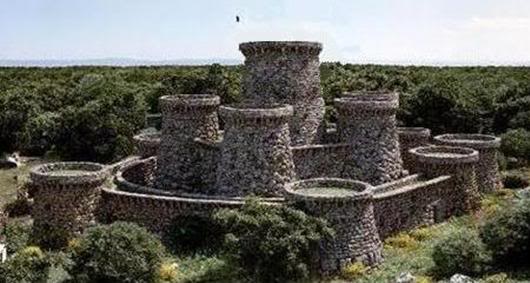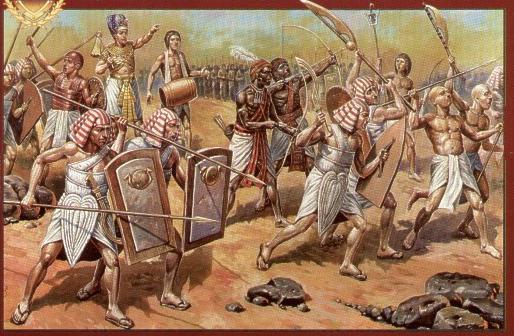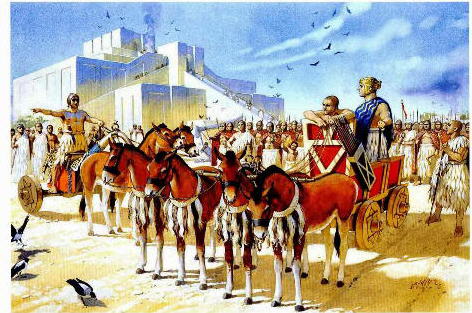++++++++++++++++++++++++++++++++++++
ITALY CENTERED
(Corsica, Sardinia, Italian penninsula, Sicily & Malta)
++++++++++++++++++++++++++++++++++++

Nuragic field fort with distinctive stone Nuraghe towers
| LORDS OF THE EARTH 38 - THE DAWN OF CIVILIZATION | |
| Newsfax Turn: #6 ( 2105 - 2101 BC ) | |
| November 16, 2015 |
|
Italy Centered
Aegean & Black Sea Areas Greater Nile Valley Greater Levant Greater Mesopotamia |
Tibetan Plateau
<--- read important info on Map Changes page!
Oxus Valley Indus Valley Ganges Valley Southern India Irrawaddy Valley |
 Titus deploys allied forces against the Old Kingdom army.
Titus deploys allied forces against the Old Kingdom army. |
No sooner was the ink dry on the treaty scrolls than in early 2012 Titus invaded Lower Egypt, the army of
Herakleopolis marching alongside. The border was guarded by approximately two thousand Old
Kingdom
infantry and skirmishers with fortifications guarding the main crossings. The 8,000 warriors of
the invaders simply overwhelmed the defenders, killing or capturing nearly all of them. The Thebeans took
less than 500 casualties and the men of Herakleopolis slightly more than 600.
Word reached Memphis and the palace of King Baufra causing a wave of anger to sweep through the city at the unprovoked attack. Since the capital had no defensive walls Baufra resolved to meet the invaders outside the city to hopefully avoid its destruction.1 |
|
Leaving a garrison in Mari, in early 2104 the army of Ur marched back southeast with the goal of crossing the
Euphrates into Mesopotamia and storming Kish itself. Ur-Nammu believed the army of Kish to be much less
effective than his own due to
the Mesopotamians being led by a woman Regent. However she now appointed her husband Menishtusu to command
and he was a warrior as skilled as Ur-Nammu. Manishtusu positioned his army along the river to contest the
crossing.
The army of Ur built bridges of boats over the Euphrates while archers exchanged volleys. More than three hundred men on either side were casualties; Ur had more archers but their warriors were easier targets exposed while crossing. Ur-Nammu and his brother Elulu shouted at the men to form ranks behind a screen of Ur battle carts. Opposite them was a larger screen of Kish battle carts making it difficult to guage the numbers of their Mesopotamian enemy. |
 Manishtusu orders the army of Kish west to the Euphrates.
Manishtusu orders the army of Kish west to the Euphrates. |